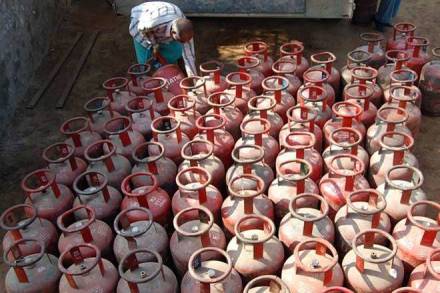A year and half after the launch of the Modi government’s flagship Pradhan Mantri Ujjwala Yojana (PMUY), the average rate of LPG cylinder refills by the beneficiaries stands at an annual 3.7 per connection issued. Though this is lower than the national average of around 7.5 refills annually for 2016-17, analysts said the PMUY refill rate doesn’t indicate any unravelling of the scheme. Among the states, while Gujarat, Bihar and Uttarakhand are among the top with more than 4 cylinder refills a year, Madhya Pradesh and Chhattisgarh have witnessed less than three refills a year per connection. PMUY was launched in May 2016 by Prime Minister Narendra Modi and petroleum minister Dharmendra Pradhan and aims to put 5 crore LPG connections within three years in the kitchens of women belonging to the below-poverty-line (BPL) households as per the Socio-Economic and Caste Census 2011 data. The scheme has been a success as more than 3 crore connections have already been issued.
In fact, given the early success of the scheme, the petroleum ministry is expected to write to the finance ministry for an additional grant of Rs 4,800 crore for issuing another 3 crore connections, as reported by FE. The government has budgeted Rs 8,000 crore for the first 5 crore connections and it claims that 85% of the beneficiaries have come back to refill LPG cylinders. Though the refilling rate by PMUY beneficiaries is low compared with the national average, experts say it should be viewed in the context of the user profile. “A poor household may not cook multiple times or boil water, for instance, and so they consume less. By that way, the refiling rate seems reasonable,” said former petroleum secretary TNR Rao.
While there are outlier states, most states such as Andhra Pradesh, Rajasthan, Tamil Nadu, Maharashtra, Uttar Pradesh, West Bengal, Punjab and Jharkhand have witnessed an annual refill rate of 3.5 cylinders. As per a report by the Petroleum Planning and Analysis Cell (PPAC), an arm of the ministry of petroleum and natural gas, easy access to free firewood in forest areas was one of the primary barriers to the adoption of LPG as cooking fuel. The study, though conducted in June 2016, was put up on the website of PPAC on October 31, 2017. The survey collected data from 1.03 lakh households without LPG connections across 120 districts in 13 states. Other barriers included access to free cowdung cakes and biomass.
In financial terms, 86% of the respondents of the survey said the high initial cost for deposit and the price of gas stove were a barrier whereas high recurring cost of the cylinder was a barrier for 83% of the respondents. Kalpana Jain, senior director with Deloitte India, agrees. “Probably they (BPL households) may not have the affordability even at the subsidised price,” Jain said, adding that poor households have shorter cooking periods. Under PMUY, while half of the initial cost of around Rs 3,200 per connection is borne by the government, the rest is to be paid by the beneficiary either upfront or through instalments which are settled by not paying back the subsidy into bank accounts while refilling.
